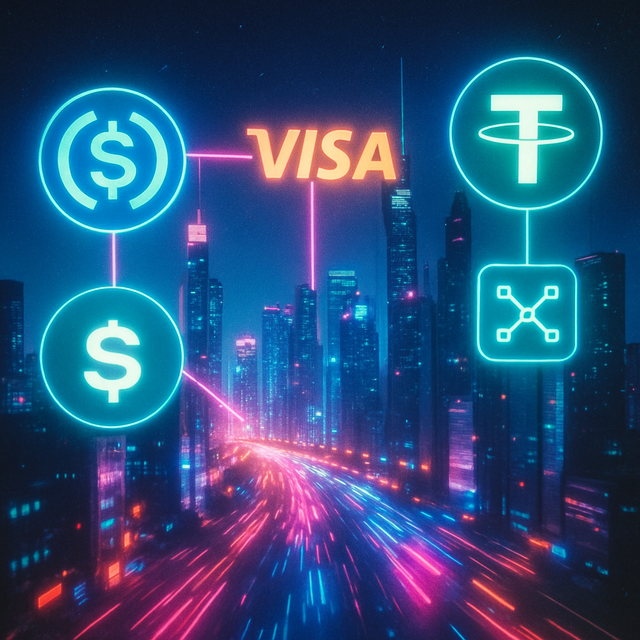Visa Bets on DeFi: A Bold Move to Revolutionize the Global Credit Market with Stablecoins
In a major push toward blockchain innovation, Visa has announced plans to leverage DeFi (Decentralized Finance) protocols and stablecoins to modernize the global credit market. This move signals a profound shift in how traditional finance giants are approaching digital assets, aiming to merge the efficiency of blockchain with the reliability of established credit networks.
Visa’s Vision: On-Chain Credit for a Borderless Economy
According to Visa executives, the company envisions a future where credit issuance, repayment, and risk assessment occur entirely on-chain. Stablecoins such as USDC and USDT would serve as the foundation for transparent, programmable, and instant credit settlements, removing intermediaries and delays that plague the current system.
This approach could make cross-border lending cheaper and more accessible, particularly for emerging markets where banking infrastructure remains limited. Through DeFi integrations, Visa aims to provide real-time, blockchain-verified credit operations while maintaining compliance with global financial regulations.
Bridging Traditional Finance and DeFi
Visa’s initiative isn’t an isolated experiment—it’s part of a growing wave of TradFi–DeFi convergence. The company has already tested USDC payments on the Solana and Ethereum networks, and sources indicate new pilot programs involving tokenized credit lines and on-chain yield strategies.
By integrating with DeFi protocols, Visa could enable consumers and institutions to borrow, lend, and earn interest without relying on centralized intermediaries, potentially opening the door to a new era of digital credit markets.
The Strategic Advantage: Stablecoins as a Global Settlement Layer
Stablecoins play a critical role in Visa’s DeFi roadmap. Unlike volatile cryptocurrencies, their price stability allows them to function as a bridge between fiat currencies and digital assets. Visa’s involvement could push regulators to accelerate clear frameworks for stablecoin-backed lending and credit operations, legitimizing the ecosystem.
If successful, this initiative could position Visa not just as a payment processor, but as a global credit infrastructure provider—anchored in blockchain technology.
Challenges Ahead
Despite the excitement, Visa faces challenges. Regulatory uncertainty around DeFi lending protocols, KYC/AML compliance, and stablecoin reserves remain major hurdles. Moreover, DeFi platforms’ decentralized nature might conflict with the centralized oversight expected of global financial institutions.
Still, Visa’s willingness to experiment could be the catalyst that transforms the global credit industry, bringing blockchain technology from the margins to the financial mainstream.
Conclusion
Visa’s DeFi experiment represents more than just another corporate blockchain initiative—it’s a strategic bet on the future of finance. If the company succeeds in creating a compliant, scalable, and transparent credit model using stablecoins, it could redefine how individuals and businesses access capital across the world.
As the lines between traditional finance and decentralized ecosystems continue to blur, Visa’s bold move could mark the beginning of a new global credit paradigm—one powered by blockchain.

Upvoted! Thank you for supporting witness @jswit.
Congratulations, your post has been manually
upvoted by @steem-bingo trail
Thank you for joining us to play bingo.
STEEM-BINGO, a new game on Steem that rewards the player! 💰
How to join, read here
DEVELOPED BY XPILAR TEAM - @xpilar.witness